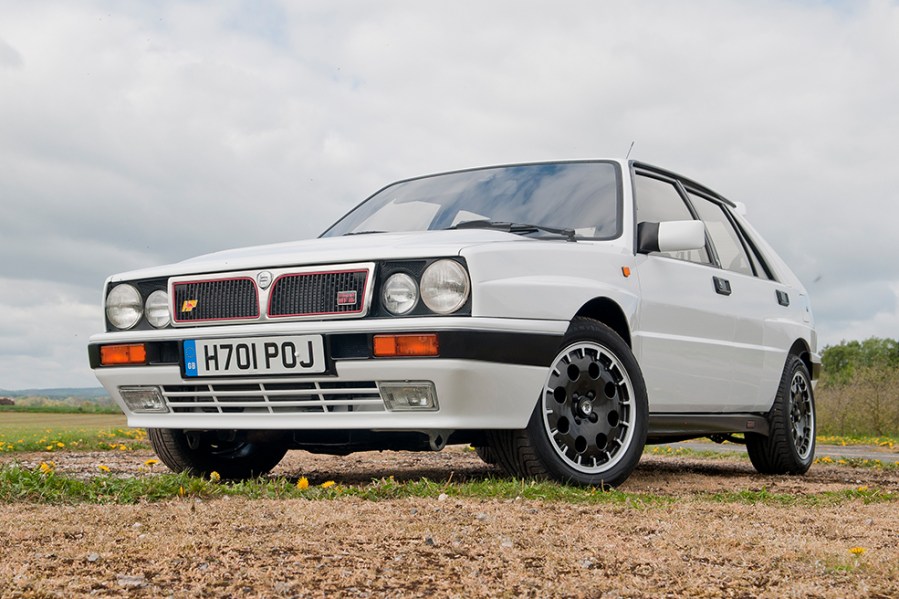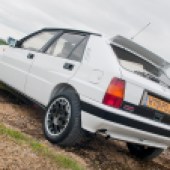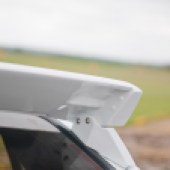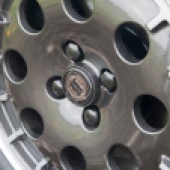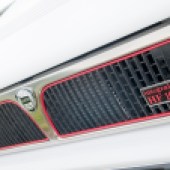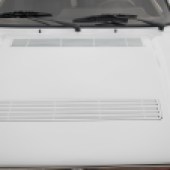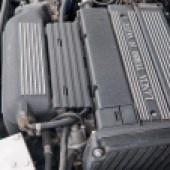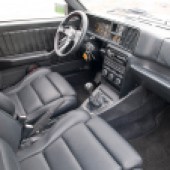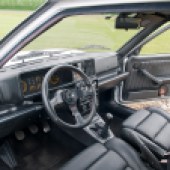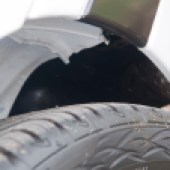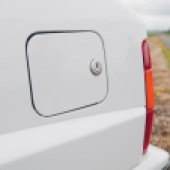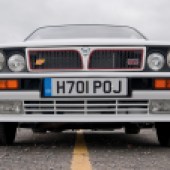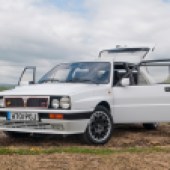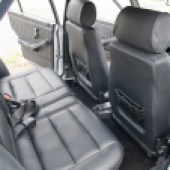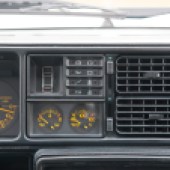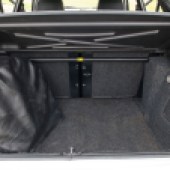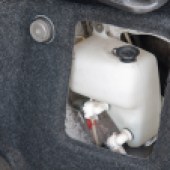This rallying icon is hugely desirable, with values still on the rise. Here’s how to buy a great Delta Integrale while you still can
Words: Chris Randall Images: Simon Cooke
The world of rallying has given us some fantastic road cars and in the late 1980s, one of the most desirable was the model you see here. The Giugiaro-designed Lancia Delta was launched in 1979 and the company had already dabbled with performance variants such as the HF Turbo – but in 1988 they took things a stage further.
Boasting beefier bodywork and uprated running gear, the Integrale featured a turbocharged 8-valve engine making 185bhp with power sent to all four wheels via a 56/44% front/rear torque split. Performance was strong with 0-62mph in just 6.6 seconds. A year later came the punchier 16-valve model with 200bhp and a revised torque split (now a rear-biased 47/53%), but Lancia wasn’t finished yet.
The 1991 Frankfurt Motor Show saw the debut of the Evoluzione version, featuring more power plus strengthened suspension and steering, steroidal bodywork and improved aerodynamic addenda, including an adjustable rear spoiler. The Evoluzione II of 1993 built on this with changes such as a bigger turbocharger and new Marelli engine management for a healthy 215bhp. By the time Integrale production ended in 1994, a little over 44,000 had been made and it had become an instant classic.
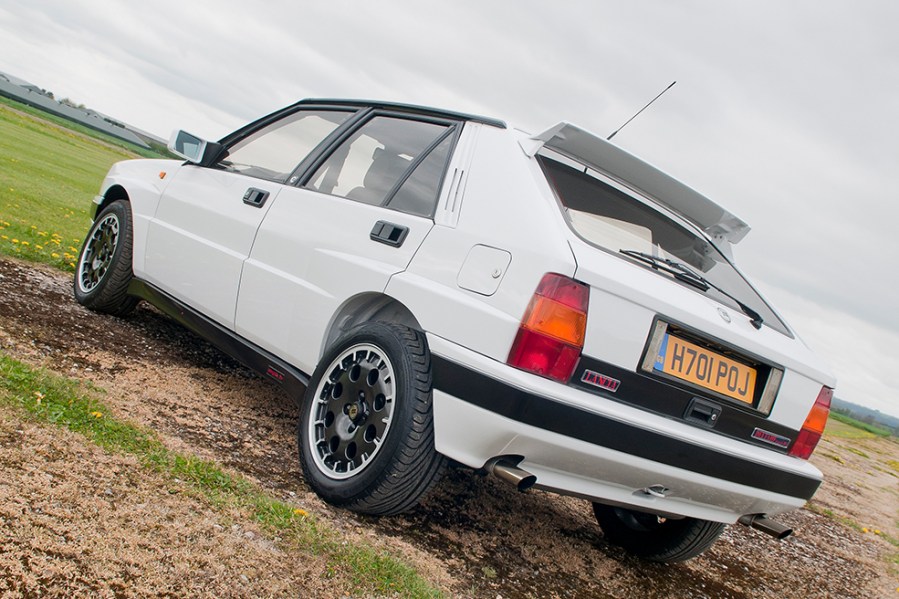
Bodywork
Many examples of the Delta Integrale are cossetted by owners but the threat of corrosion is greater than with some other cars from the period; it’s well worth spending plenty of time examining the bodywork. The main places where rust can lurk include the inner and outer wings and wheelarches, the bottoms of the doors, the sills and the front/rear valances. You’ll also want to establish the condition of the front panel and the rear-most edge of the roof, where rot can end up affecting the tailgate hinges.
The A-pillars are also susceptible to rust; this area (and the scuttle nearby) also needs close examination for any signs of stress cracks in the metal. The Delta Integrale’s body wasn’t quite as rigid as it could be, and if an owner has chosen to stiffen the suspension, additional pressure is placed on the shell.
If you’re happy with how things look up top then it’s a good idea to give the underneath a thorough check, focusing on the condition of the front chassis legs – these can succumb to rust and cracks – along with the jacking points and crossmembers. And it goes without saying that you’ll want to be certain there’s no evidence of crash damage. Panels for Evo models are available but rarer for earlier cars.
Engine and transmission
The Delta Integrale’s engine was inherently strong and with careful maintenance is capable of high mileages without major problem. Oil use is to be expected – up to a litre every 1000 miles – so be sure to check the level; evidence that it’s been changed every 3000 miles using a top-quality oil will bring peace of mind. The service history should also show a record of cambelt renewal every 36k miles on 8-valve engines, or 24k miles on the 16-valve version; it’s crucial this is done on time, so be wary of a car where the schedule hasn’t been adhered to. It makes sense to renew the water pump at the same time, along with the balancer shaft belt; budget around £800 at a specialist.
Incidentally, some owners may have chosen to delete the balancer shafts (it improves efficiency and response and can boost oil pressure as the bearings no longer need to be fed – kits are available for £160-200) so ask whether this has been done. That aside, spend time on the usual checks for knocks and rumbles and a smoky exhaust caused by worn valve guides or an ailing turbocharger. The latter can quickly become an expensive job given the labour involved and can increase the likelihood of discovering other problems that need attending to along the way. A clattering from the top end points to camshaft wear; replacements are a few hundred pounds each. Finally, examine the engine for oil leaks – the sump gasket is a common culprit – and look for oil pressure of at least 1bar when hot.
Assuming the engine is in good shape, plenty of time needs to be devoted to the health of the four-wheel drive transmission as repair costs can mount alarmingly. A gearbox rebuild will swallow a few thousand pounds, so listen for whines and crunching synchromesh and ensure the shift isn’t notably obstructive. Clutch replacement isn’t cheap either at around £750-800. Differentials can leak oil too, and if you’re not sure about the condition of the four-wheel drive system we’d strongly recommend a thorough check by a specialist.

Suspension, steering and brakes
The suspension is well up to the rigours of hard use, so checks really just need to be focused on the overall condition of components. The cost of renewing all of the bushes will soon add up, so factor this in if a prospective purchase is in need of a refresh, and spend some time establishing the integrity of mounting points for the front wishbones and rear subframe; both can succumb to corrosion, as can the front and rear suspension turrets. Also bear in mind our earlier warning about a stiffer set-up affecting the bodyshell; you could return it all to standard specification, at a cost.
All Integrales were left-hand drive from the factory but some did get converted by companies in the UK. For various reasons the job involved fitting a steering rack that resulted in a notably different feel, and for that reason many enthusiasts prefer the original arrangement. Right-hand drive can have a negative impact on values – worth bearing in mind before you take the plunge.
There’s little to worry about in the brakes department over and above the usual issues caused by wear and tear, although squeaks are a common trait; this affects some cars more than others and it’s something you may just have to live with. Parts prices aren’t unreasonable and you can source a full set of pads and discs for around £300, but it’s a good idea to check that little used examples aren’t suffering from sticking calipers. ABS became optional with the introduction of the 16-valve model, so if this is fitted, ensure that the warning light illuminates and extinguishes correctly on start-up.
Lastly, it’s a good idea to check that alloy wheels aren’t suffering from corrosion or distortion – they can be refurbished but replacing one of the larger Speedline rims will set you back around £300 per corner. While in this area, look for uneven tyre wear caused by alignment that’s gone awry; a full four-wheel check and adjustment by a specialist can transform the way a Delta Integrale feels on the road.
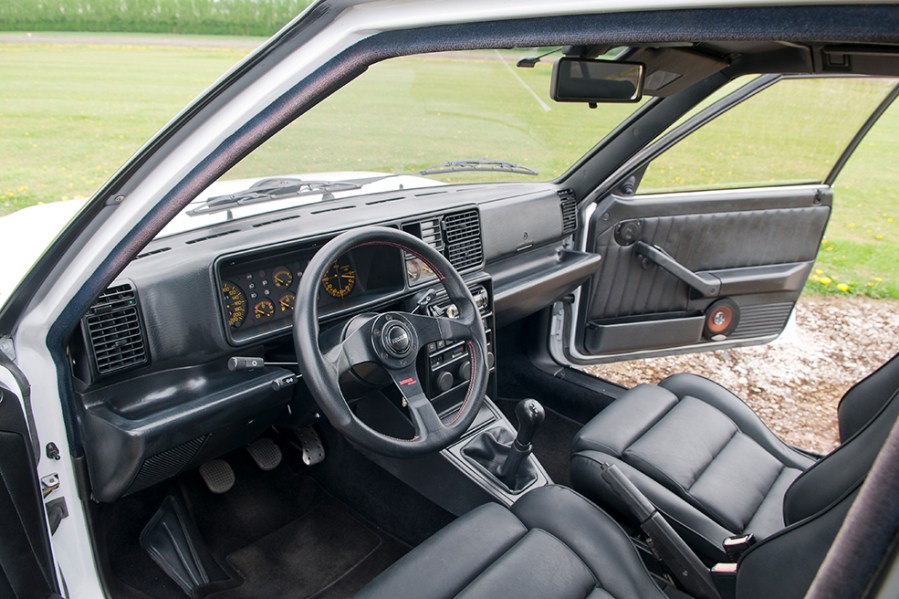
Interior, trim and electrics
The cabin certainly felt sporty thanks to heavily bolstered seats trimmed in Alcantara or leather, along with a full complement of dials with their distinctive yellow markings. The last three decades might have taken their toll so make sure it’s not ended up looking scruffy. A professional trimmer can sort any damage or wear to seat bolsters and door cards but you’ll need to budget accordingly.
Also bear in mind that some parts are hard to source, with second-hand parcel shelves being especially pricey – we’ve seen these command £1000. Otherwise, it’s a case of checking that dashboard plastics are undamaged and that there’s no evidence of water leaks. Unfortunately, creaks and rattles aren’t unusual and unless you’ve got the patience to track down the cause, it’s something you’ll have to put up with.
Despite all the usual jokes about Italian electrics the Integrale doesn’t fare too badly in this respect, so it’s going to be a case of checking that all of the dials and switchgear still operate as they should. Poor earths can lie at the root of many niggling issues – nothing that a competent auto electrician can’t sort out.
Lancia Delta Integrale: our verdict
It won’t take long behind the wheel of an Integrale to discover just why these cars are so desirable. A good one feels very special, from the punchy and exuberant performance to the grip generated by the four-wheel drive system, and it’s easy to get carried away with fantasies of taking to the rally stages. A rival such as the Audi Quattro might feel more solidly constructed, with a ruthless efficiency in the way it goes about its business, but the sheer character offered by the Lancia is very beguiling. It can make any journey feel like an event and that’s something you’ll probably never tire of.
There’s no escaping the fact that even the newest car is thirty years old, and some will have been subjected to hard use, so you’ll want to be diligent when it comes to inspecting a prospective purchase. But find an example that’s been cherished and carefully maintained and this hottest of rallying hatchbacks will be an immensely satisfying car to own.
It’s clear that the days of bagging a Delta Integrale for £10k are long gone. Values have risen significantly in the last five to six years, and a tidy 8v or 16v will set you back in the region of £18,000–25,000, and even then it might need a few bits sorting. Very good ones are heading for the £35,000-or-more range, and you can expect somewhere in the mid-forties for the best. As for the Evo, that’s a notably more expensive proposition.
A very nice Evo I can command upwards of £60,000, with immaculate low-mileage examples reckoned to be breaching six figures. Superb Evo II examples start around here, heading towards the £150,000 mark for the best. Indeed, we’ve seen a superb 33,000-mile Evo II with a price tag of £175k. Optimistic? Perhaps, but with a number of cars in the classifieds being advertised as ‘POA’, it’s clear that these aren’t going to be cheap. Good news if you’ve already got one, then – but if you want to get your hands on this Italian classic, be prepared to dig deep.
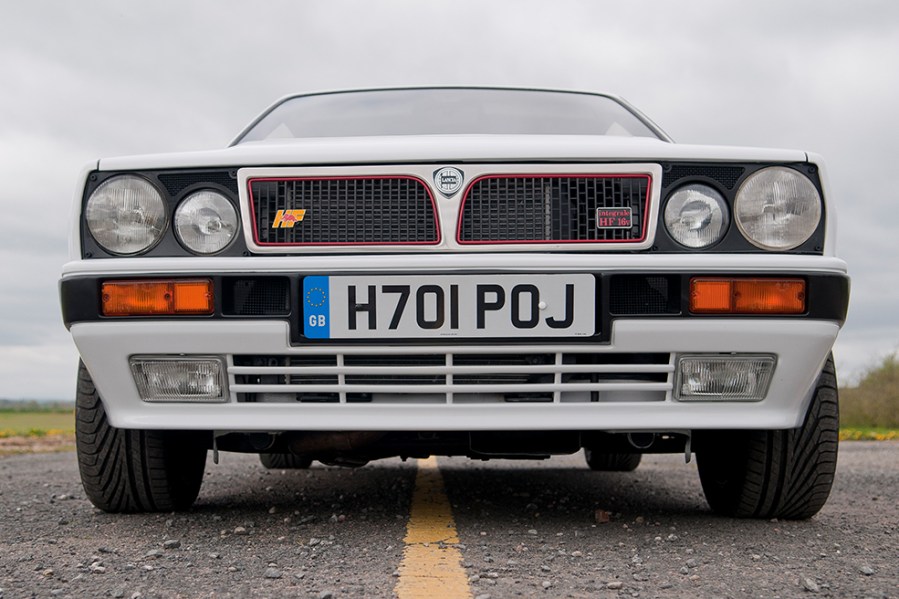
Lancia Delta Integrale timeline
1979
Lancia launches the Delta family hatchback, and bread-and-butter models are soon followed by quicker variants.
1987
The HF Integrale is launched in 8-valve form, the 2.0-litre turbocharged engine making 185bhp. Just under 9900 were made.
1989
The Integrale gets a further boost in power and performance with the launch of the 16v at the Geneva Motor Show. A power bulge in the bonnet is the obvious external change and there’s a rear-biased torque split.
1991
The Frankfurt Motor Show sees the debut of the Evoluzione that features a wider track, bulging bodywork and 200bhp. It’ll hit 62mph in just 5.7 seconds.
1993
Further changes to the bodywork and revisions to the turbo and engine management mark out the Evoluzione II. Power is raised to 215bhp.
1994
Production of the Integrale ends with around 44,300 examples made.

